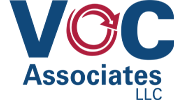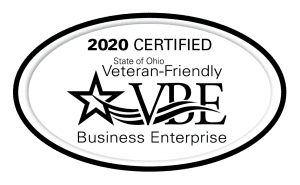In today’s fast-paced, ever-evolving professional landscape, continuous learning and skill development are not just beneficial but essential. A well-crafted Professional Development Plan (PDP) is a roadmap that guides individuals toward their career objectives, fosters growth, and builds competence. It focuses on acquiring new skills, knowledge, and abilities while enhancing existing ones. We will explore the critical steps in designing an effective PDP, from setting clear, realistic goals to implementing and assessing the plan.
Assessing Current Skills and Knowledge
The first step in creating a Professional Development Plan involves conducting a comprehensive assessment of your current skills and knowledge. This self-evaluation is essential in identifying your strengths, areas of improvement, and gaps that must be addressed. Start by listing your professional skills, technical knowledge, and competencies.
These could include project management abilities, leadership skills, technological adeptness, or industry-specific knowledge. Once this inventory is made, rate yourself against each skill or competency based on your confidence and proficiency levels. This will give you a baseline to work from when setting your professional development goals. Be honest in this assessment – the more accurate it is, the more effective your PDP will be.
Setting Clear Professional Goals
Setting clear and achievable professional goals is the next pivotal step in creating a PDP. These goals act as your destination, guiding your professional development journey. Begin by pondering where you would like to see yourself professionally in the future. This could be a specific position, a new skill you want to acquire, or a level of expertise you wish to reach in your field. Once you have a clear vision, set SMART goals (Specific, Measurable, Achievable, Relevant, Time-bound) that align with this vision.
Specific goals are well-defined and clear, measurable goals allow for tracking progress, achievable goals are realistic and attainable, relevant goals align with your career path, and time-bound goals have a clear timeline for completion. This framework ensures your goals are tangible and trackable, increasing the likelihood of success. Remember, these goals should challenge you but also be realistically achievable with the resources and time you have.
Researching Relevant Resources
The next phase in creating a robust Professional Development Plan involves researching pertinent resources that can aid in achieving your set objectives. These resources may include books, online courses, webinars, mentorship programs, or professional networks, depending on the nature of your goals. Leveraging digital platforms like LinkedIn Learning, Coursera, or Skillshare can provide access to a vast array of courses across various fields.
For those seeking to build specific skills like coding or data analysis, platforms like Codecademy or DataCamp might be more beneficial. It’s crucial to consider the credibility and quality of these resources – look for courses or programs that are recognized or accredited by reputable bodies in your field.
Additionally, networking within your industry can open doors to mentorship opportunities or collaborative learning groups, which can be invaluable in your professional growth. Remember, the goal here is not to consume as many resources as possible but to find those that align with your career objectives and learning style.
Creating a Personalized Learning Plan
Creating a personalized learning plan is the next step in your Professional Development Plan journey. This plan should be tailored to your unique needs, goals, and learning preferences. Define the skills and knowledge areas you wish to focus on, the resources you plan to use, and the activities you will undertake to achieve your goals.
For instance, if you aim to improve your data analysis skills, your learning plan may include completing online courses from platforms like DataCamp, reading specific books, or practicing with real-world data sets. Ensure that your plan includes a realistic timeline that factors into your daily responsibilities and other commitments. Remember, the plan should be flexible and adaptable to accommodate changes in your goals, resources, or availability. This personalized learning plan serves as your blueprint for success, guiding your professional development actions and keeping you focused on your objectives.
Tracking Progress and Adjusting the Plan
The last but equally critical step in designing a Professional Development Plan is tracking your progress and adjusting the plan as necessary. Regularly monitoring your advancement toward your goals allows you to assess the effectiveness of your learning strategies and make timely adjustments. Create a system to document your progress – this could be a simple journal, a detailed spreadsheet, or even a digital tracking tool.
Record the resources you have utilized, the skills you have acquired, and the milestones you have achieved. This tracking process not only provides a sense of accomplishment but also highlights areas where more effort may be required. It is essential to remember that a Professional Development Plan is not a static document but a dynamic plan that evolves with your growth. You may need to adjust your goals, add new ones, or change your learning resources based on your progress, new trends in your field, or changes in your career aspirations.
Enhance Your Career Prospects

Creating a Professional Development Plan is a strategic and dynamic process that promotes continuous learning and professional growth. By identifying your skills and knowledge, setting clear and achievable goals, researching relevant resources, crafting a personalized learning plan, and tracking your progress, you can enhance your career prospects, increase your professional competence, and stay ahead in a rapidly evolving world of work.
Remember, this plan is not a fixed roadmap but an evolving guide that should be revisited and adjusted as you progress in your career. The ultimate aim is personal and professional development, so investing the time and effort into this process is a significant step towards achieving your career aspirations.
Professional Development Plan Information
Visit VOC Associates to gain comprehensive information on professional development, as well as a wide range of other topics related to medicine, dentistry, and lab equipment. Whether you’re seeking the expertise of seasoned professionals or looking for valuable insights, our dedicated team is here to assist you. Conveniently located in Ohio, we are just a phone call away at (216) 496-6884. Reach out to us today, and let us guide you on your journey towards success.







